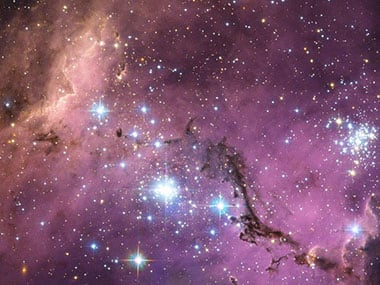London: Astronomers have for the first time accurately measured the distance to one of the Milky Way’s neighbouring galaxy - and it is just 163,000 light-years away.
Scientists using telescopes at European Southern Observatory’s La Silla Observatory in Chile as well as others around the globe found the dwarf galaxy nearby called the Large Magellanic Cloud, which lies 163,000 light-years away.
The new measurement improves scientists’ knowledge of the rate of expansion of the Universe - the Hubble Constant - and is a crucial step towards understanding the nature of the mysterious dark energy that is causing the expansion to accelerate.
“I am very excited because astronomers have been trying for a hundred years to accurately measure the distance to the Large Magellanic Cloud, and it has proved to be extremely difficult,” said Wolfgang Gieren from Universidad de Concepcion, Chile and one of the leaders of the team.
[caption id=“attachment_653270” align=“alignleft” width=“380”]  The Large Magellanic Cloud (LMC) is ablaze with star-forming regions. From the Tarantula Nebula, the brightest stellar nursery in our cosmic neighborhood, to LHA 120-N 11, part of which is featured in this Hubble image, the small and irregular galaxy is scattered with glowing nebulae, the most noticeable sign that new stars are being born. Image Credit: ESA/NASA/Hubble[/caption]
“Now we have solved this problem by demonstrably having a result accurate to 2 per cent,” he said in an ESO statement.
The astronomers worked out the distance to the Large Magellanic Cloud by observing rare close pairs of stars, known as eclipsing binaries.
As these stars orbit each other they pass in front of each other. When this happens, as seen from Earth, the total brightness drops, both when one star passes in front of the other and, by a different amount, when it passes behind.
By tracking these changes in brightness very carefully, and also measuring the stars’ orbital speeds, it is possible to work out how big the stars are, their masses and other information about their orbits.
When this is combined with careful measurements of the total brightness and colours of the stars remarkably accurate distances can be found.
This method has been used before, but with hot stars.
However, certain assumptions have to be made in this case and such distances are not as accurate as is desirable.
But now, for the first time, eight extremely rare eclipsing binaries where both stars are cooler red giant stars have been identified.
These stars have been studied very carefully and yield much more accurate distance values - accurate to about 2 per cent.
“We are working to improve our method still further and hope to have a 1 per cent LMC distance in a very few years from now. This has far-reaching consequences not only for cosmology, but for many fields of astrophysics,” said Dariusz Graczyk, co-author of the paper published in journal Nature.
PTI


)
)
)
)
)
)
)
)
)



